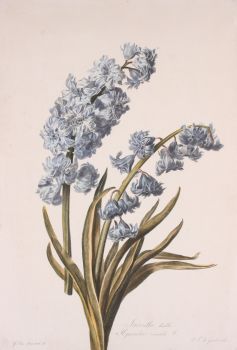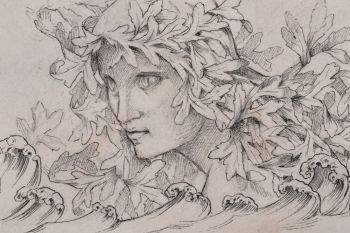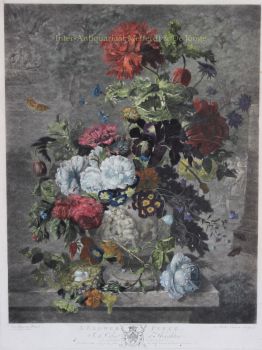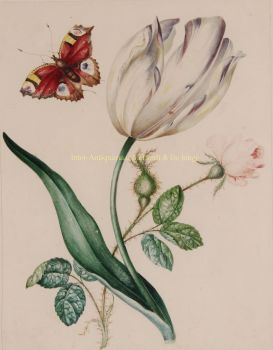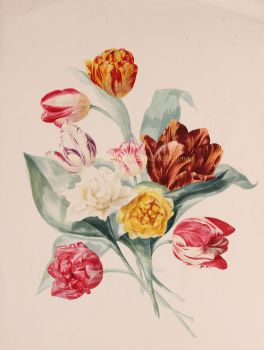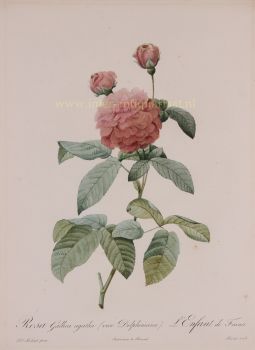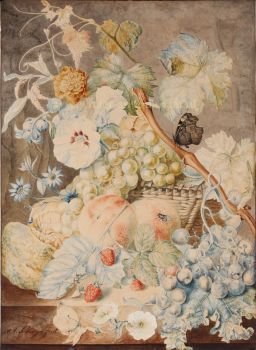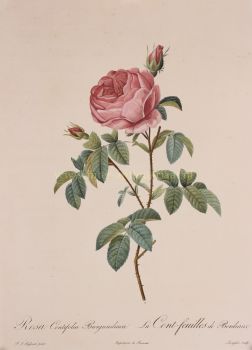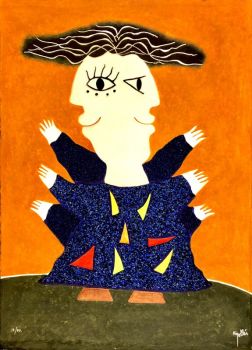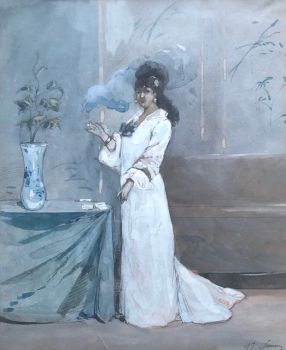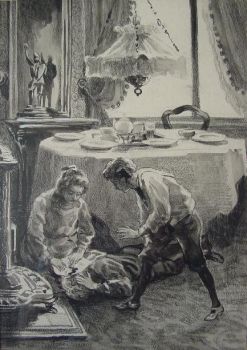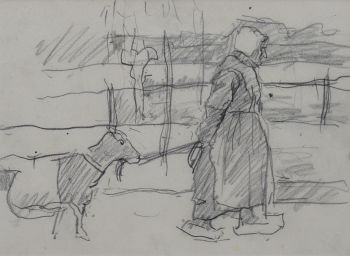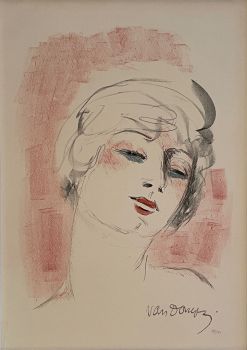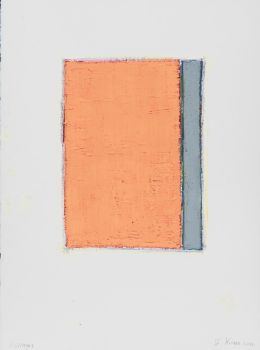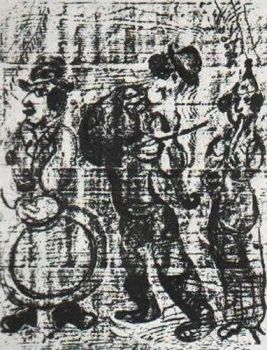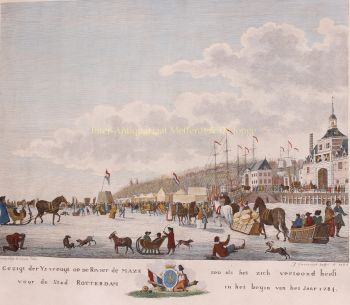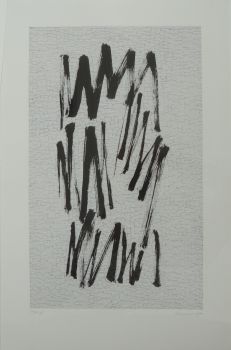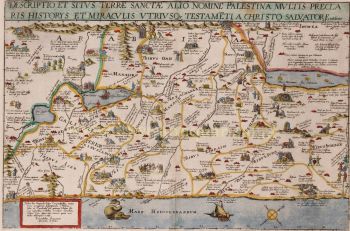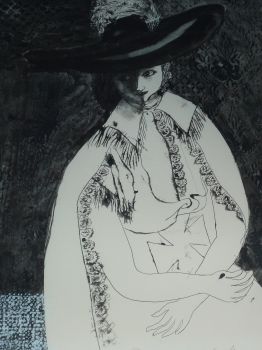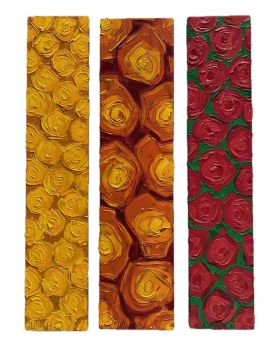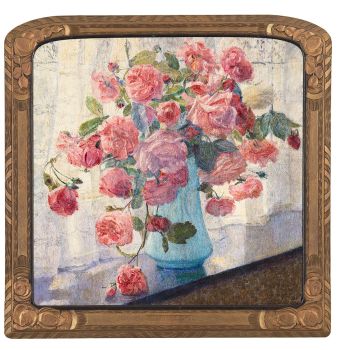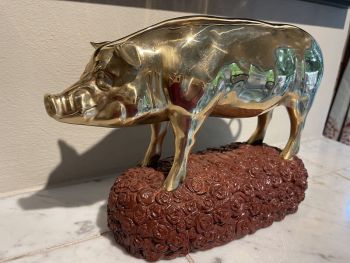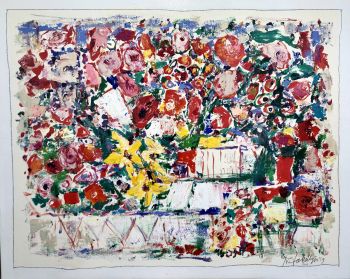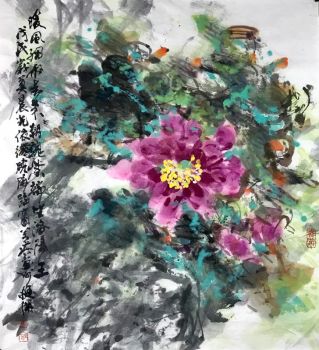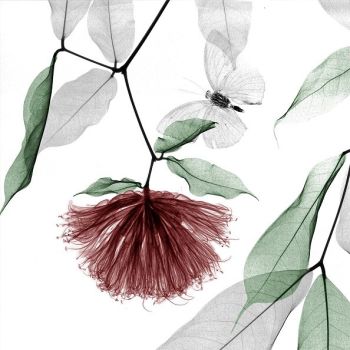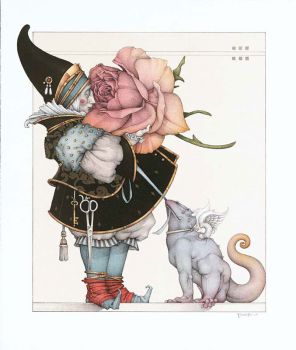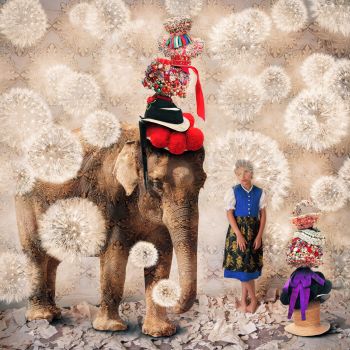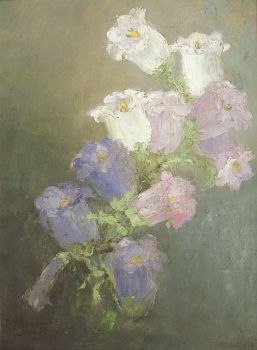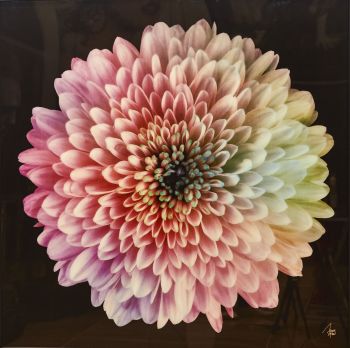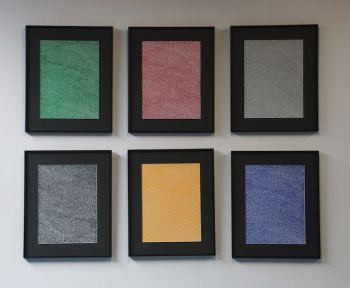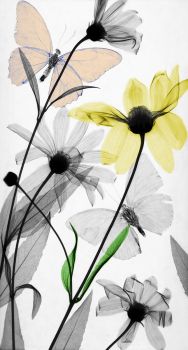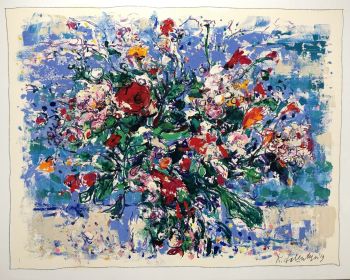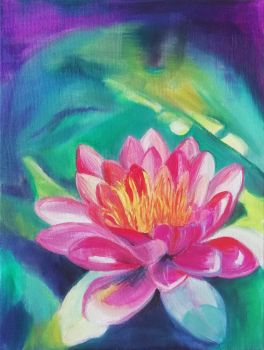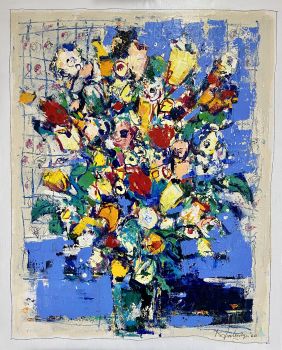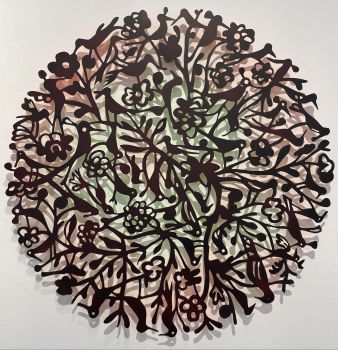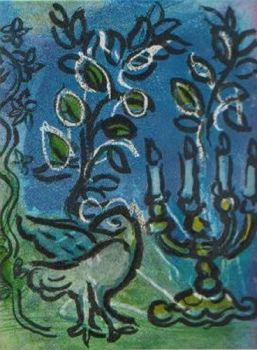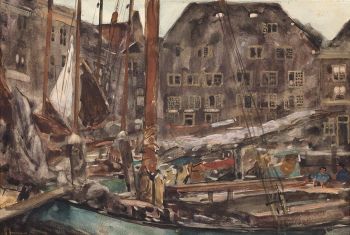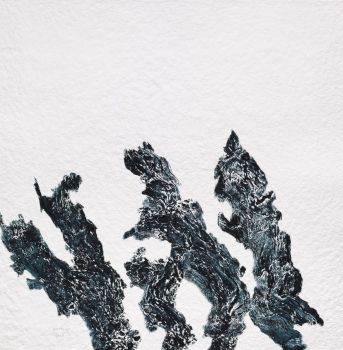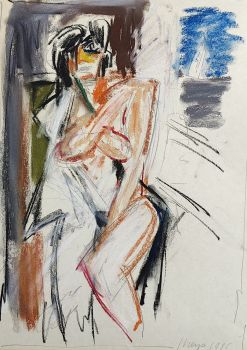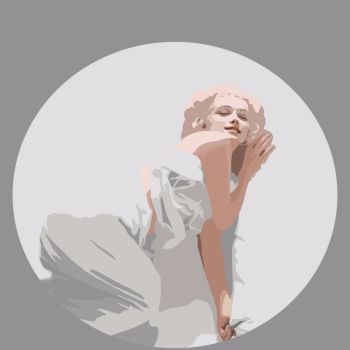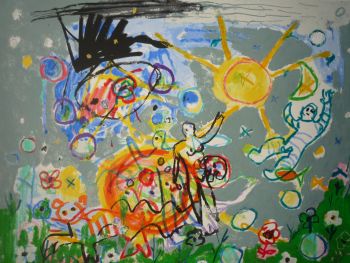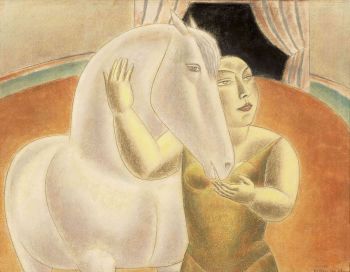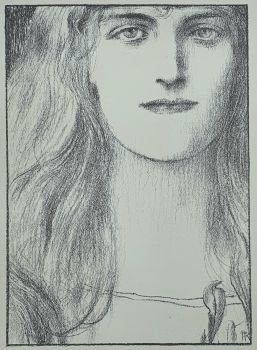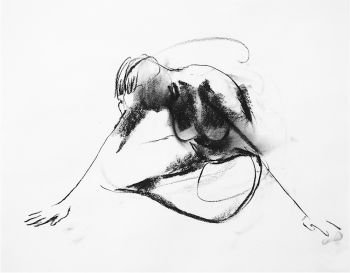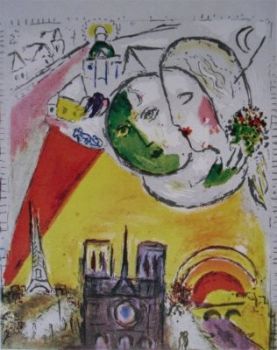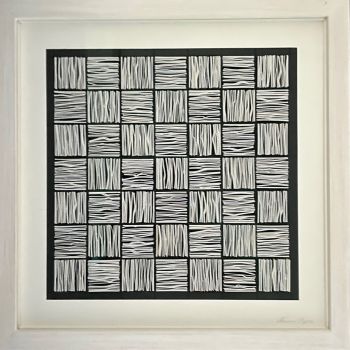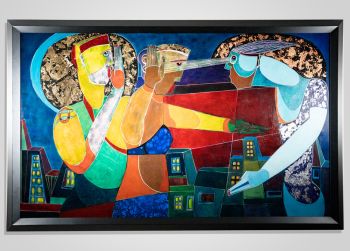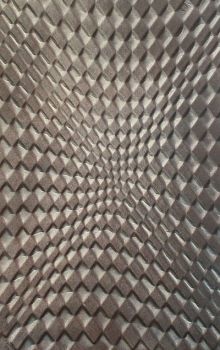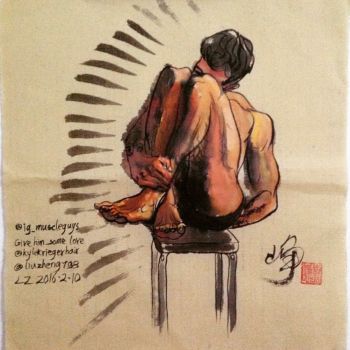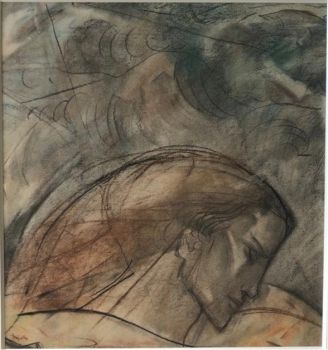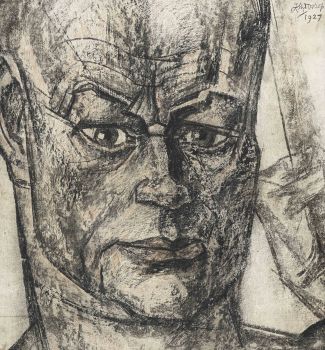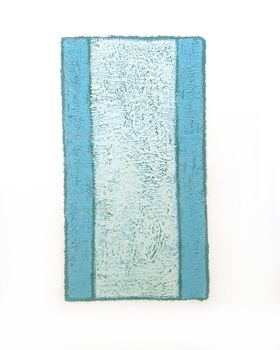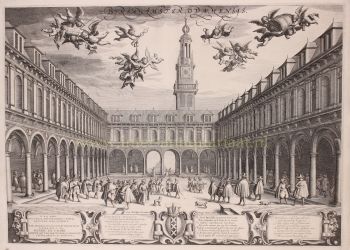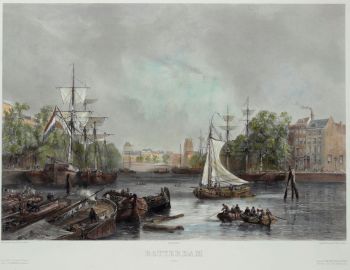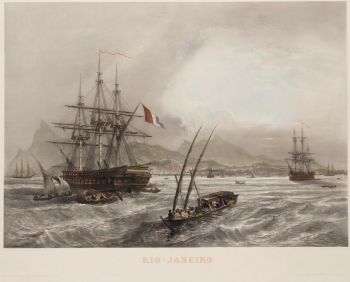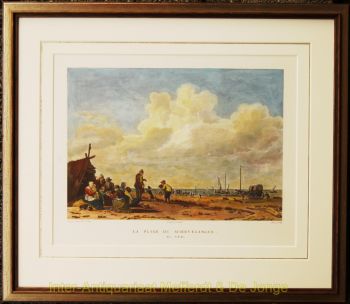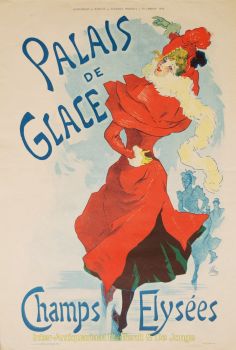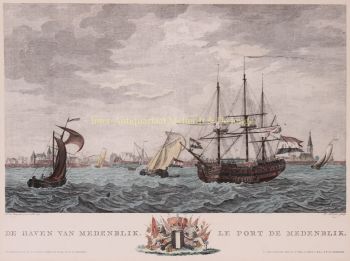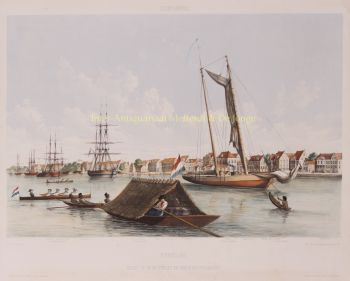Rose 1799
Gerard van Spaendonck
Carta
50 ⨯ 33 cm
€ 1.250
Inter-Antiquariaat Mefferdt & De Jonge
- A proposito di opere d'arteRose a cent feuilles [rose with one hundred petalls) or cabbage rose, stippel engraving made by P.F. le Grand after a drawing by Gerard(us) van Spaendonck from the Fleurs dessinées d'après nature, published between 1799 and 1801. With original hand colouring. Size. (print) approx. 50 x 33 cm. The Centifolia roses date from around 1550. Although once regarded as forms of a species, they are now thought most likely to be hybrids between the autumn damask and an alba rose. Centifolias are usually compact bushes with heavy double flowers which often droop under there own weight. The colours varied from white to deep rose red plus striped and spotted varieties. They were much featured in the paintings of the Dutch masters and came to be known as "The rose of the painters". It has fragrant, mid pink, double flowers, the buds of which are covered in fine tubercles or filaments known as moss. Mosses are natural mutations which first occurred on Damask and Centifolia roses. They were very fashionable in the early eighteenth and nineteenth centuries when several hundred forms were raised. Gerard van Spaendonck (1756-1842) studied with decorative painter Willem Jacob Herreyns in Antwerp. In 1769 he moved to Paris, where in 1774 he was appointed miniature painter in the court of Louis XVI. In 1780 he succeeded Madeleine Françoise Basseporte as professor of floral painting at the Jardin des Plantes, and was elected a member of the Académie des beaux-arts shortly afterwards. Van Spaendonck contributed to over fifty works of Les Vélins du Roi, a famous collection of botanical watercolours owned by French royalty. From 1799 to 1801 he published twenty-four plates as part of his Fleurs Dessinees d'apres Nature (Flowers Drawn from Life), which were high-quality engravings for students of floral painting. Today the Fleurs Dessinees d'apres Nature are considered among the best botanical engravings in the world. Stipple engravings with which one is able to differentiate between different tones of gray, turned out to be highly suitable for depicting botanical details, a method that Van Spaendonck also taught his pupil Pierre-Joseph Redouté. Like other famous flower painters, Van Spaendonck was also technically perfect: in oil, watercolour, pen or pencil, on any scale. With attention to every minute detail and elegance and sophistication of the composition, he shows his mastery. Like Jan van Huysum, Van Spaendonck understood the zeitgeist and created flower compositions that matched the taste of the public of around 1800. He combined the traditional Dutch way of representing flowers with French sophistication and good taste. Price: Euro 1.250,-
- A proposito di opere artista
Gerard era un fratello maggiore di Cornelis van Spaendonck (1756-1840), anch'egli noto pittore. Negli anni 1760-1769 studiò ad Anversa con il pittore decorativo Willem Herreyns. Nel 1769 si trasferì a Parigi, e nel 1774, tramite la mediazione di Claude-Henri Watelet, all'età di 28 anni, fu nominato miniaturista alla corte di Luigi XVI. Espone per la prima volta nel 1777. Nel 1780 succede a Françoise Basseporte (1701-1780) come professore di pittura floreale al Jardin des Plantes. Poco dopo fu eletto membro dell'Académie des beaux-arts.
Van Spaendonck dipinse sia ad olio che ad acquerello. Ha realizzato più di cinquanta opere per i Vélins du Roi, una rinomata collezione di acquerelli botanici di proprietà della famiglia reale francese. Dal 1799 al 1801 pubblicò 24 tavole dei suoi Fleurs Dessinées d'après Nature (Fiori disegnati dal vero); incisioni di alta qualità per studenti di pittura floreale. Oggi Fleurs dessinées d'après nature è un libro molto apprezzato nel campo della pittura floreale.
Nel 1788 Van Spaendonck fu nominato consigliere dell'Académie e nel 1795 fu uno dei fondatori dell'Institut de France. Nel 1804 fu insignito della Legion d'Onore. Poco dopo fu nobilitato da Napoleone Bonaparte. Van Spaendonck morì nel 1822 all'età di 76 anni.
In Groeseindstraat 99 a Tilburg, si può vedere una targa dove un tempo si trovava il luogo di nascita dei fratelli Van Spaendonck. Oltre al pittore Karel Appel, Gerard van Spaendonck è l'unico olandese ad essere sepolto al Père Lachaise di Parigi. Gerard è proprio dietro la tomba di Chopin.
Sei interessato ad acquistare questa opera d'arte?
Artwork details
Related artworks
- 1 - 1 / 1
Jan Sluijters
Original illustration of Sluijters for the book: 'Laura's opstel'1881 - 1957
Prezzo su richiestaKunsthandel Pygmalion
1 - 4 / 24William Rosewood
She Loves Me, She Loves Me Not2019 - 2020
Prezzo su richiestaGalerie Mia Joosten Amsterdam
1 - 4 / 24Rene Rietmeyer
"PORTRAIT OF TOMOJI OGAWA SEPTEMBER 1999"1999
Prezzo su richiestaEuropean Cultural Centre Collection
1 - 4 / 24- 1 - 4 / 12


